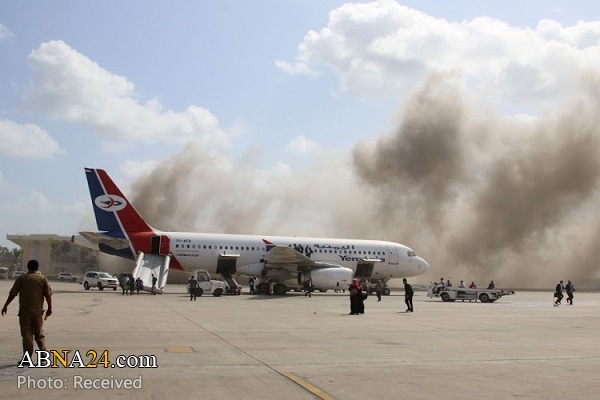AhlulBayt News Agency (ABNA): The huge blast that rocked Aden airport upon arrival of the new cabinet members to the city cut short Saudi Arabia's happiness with the announcement of the new agreement between the resigned and fugitive Yemeni President Abdrabbuh Mansour Hadi and the Southern Transition Council on the ruins of Riyadh deal and sent the new self-proclaimed government on the brink of collapse shortly after its formation.
The disputes crisis and the spark of Aden blasts
Despite the fact that so far no individual or group claimed responsibility for the attack, Saudi and Hadi government’s officials attributed it to the Ansarullah resistance movement in a bid to prevent early collapse of the newly-formed government and thus cover up the big defeat in Yemen’s political scene.
Doubtlessly, key implications of the attack, which unconfirmed reports say killed the new interior minister, are the intensification of the distrust between the forces present in the new accord, emergence of the wide divisions, and destabilization of the future coalition cabinet and agreements.
After the new round of clashes between the pro-Hadi forces and UAE-backed STC loyalists in Abyan, Saudi Arabia through behind-the-scenes deals with the UAE pushed for the revival of the Riyadh peace agreement’s political and military terms. The outcome was the last week’s formation of the new Aden-based government based on a 50-50 sharing of the power between the Hadi circle and the separatist STC. Part of the Saudi-based government ministers returned to Aden according to the deal. Also, the deal says that the southerners have to withdraw their forces from Aden and hand over the presidential palace, Abyan, and Socotra Island to the Hadi forces.
The main driver behind Saudi Arabia’s push for a fast end to the divisions through putting pressure on Hadi is keeping the Arab coalition focus on Ma’arib developments and prevention of fall of the strategic province to Ansarullah which holds the capital Sana’a and much of the north along with the army and other popular resistance forces.
The agreement is, however, far from satisfactory to the STC because the council not only does not intend to hand over Socotra— where the UAE has a military base— but also it does not plan to withdraw from its controlled areas as it would interpret the exit as undoing its gains which are necessary to declare potential independence from the north. Days before the blast, the STC forces said they were opposed to the position of the new government in Aden.
Therefore, the main suspect of the attack is the southern council which itself also is responsible for the security of the airport. Also, it should be remembered that the Saudi plan to deploy the STC militant loyalists to Ma’arib, which is the traditional bastion of the Muslim Brotherhood in Yemen, is not with the full will of the UAE and the STC is unhappy with undermining the Muslim Brotherhood-aligned Islah Party position there.
On the other side, the Islah party sees itself as the losing party of the Saudi-brokered deal because its share in the government was reduced, and it was only under the Saudi pressure and a fear of losing Ma’arib that it agreed with the deal.
Over the past months, various reports told about the UAE difference with Hadi over the presence of Brotherhood forces in the cabinet. This feeds the suspicion that Islah is behind the airport attack. Hani bin Breik, the deputy STC chief, in a Twitter post said that although Ansarullah is unhappy with the new government, the Turkish and Qatari-aligned groups are even angrier.
The airport attack influenced the Ma’arib war frontiers. Ansarullah has so far made vast advances in the strategic province that is the most important base of Riyadh in central Yemen. The movement has now completed the province encirclement and thus pushed to the wall Hadi forces and mercenaries. Naturally, by the failure of the Saudi attempts to end Ma’arib encirclement through bridging the gaps in the Hadi government, the battleground developments in the significant province remain unfolding in favor of Ansarullah and the Yemeni army.
/129

